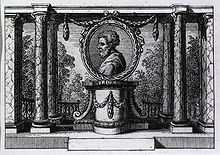William of Saliceto

William of Saliceto
Guglielmo da Saliceto[1](Cadeo 1210–1277) in Latin Guilielmus de Saliceto, also called William of Saliceto[2] and Guillaume de Salicet, was an Italian surgeon and cleric in Lombardy.
He broke tradition with Galen by claiming that pus formation was bad for wounds and for the patient. He was a professor at the University of Bologna. In 1275 he wrote Chirurgia which promoted the use of a surgical knife over cauterizing. He also was the author of Summa conservationis et curationis on hygiene and therapy. Lanfranc of Milan was a pupil who brought William's methods into France. William gave lectures on the importance of regular bathing for infants, and special care for the hygiene of pregnant women.
References
- ↑ Plinio Prioreschi A History of Medicine: Medieval Medicine 1996 - Page 453 "Guglielmo da Saliceto"
- ↑ Roger Kenneth French Canonical Medicine: Gentile Da Foligno and Scholasticism 2001 - Page 43 "Where 'William' is quoted on surgery (Canon III, 69r), it seems likely that Guglielmo da Saliceto is intended. Sometimes Gentile specifies a 'William the Lombard', for example Canon III, 88r. As Brescia is in Lombardy, William the Lombard is ..."
- The Surgery of William of Saliceto, English translation by Leonard D. Rosenman ISBN 1-4010-8572-5.
- Copernicus, Ivan Crowe ISBN 0-7524-2553-6.
- Medicine and the Italian Universities: 1250-1600, Nancy G. Siraisi.
External links
- Of blood, inflammation and gunshot wounds: the history of the control of sepsis, AJ Thurston.
|